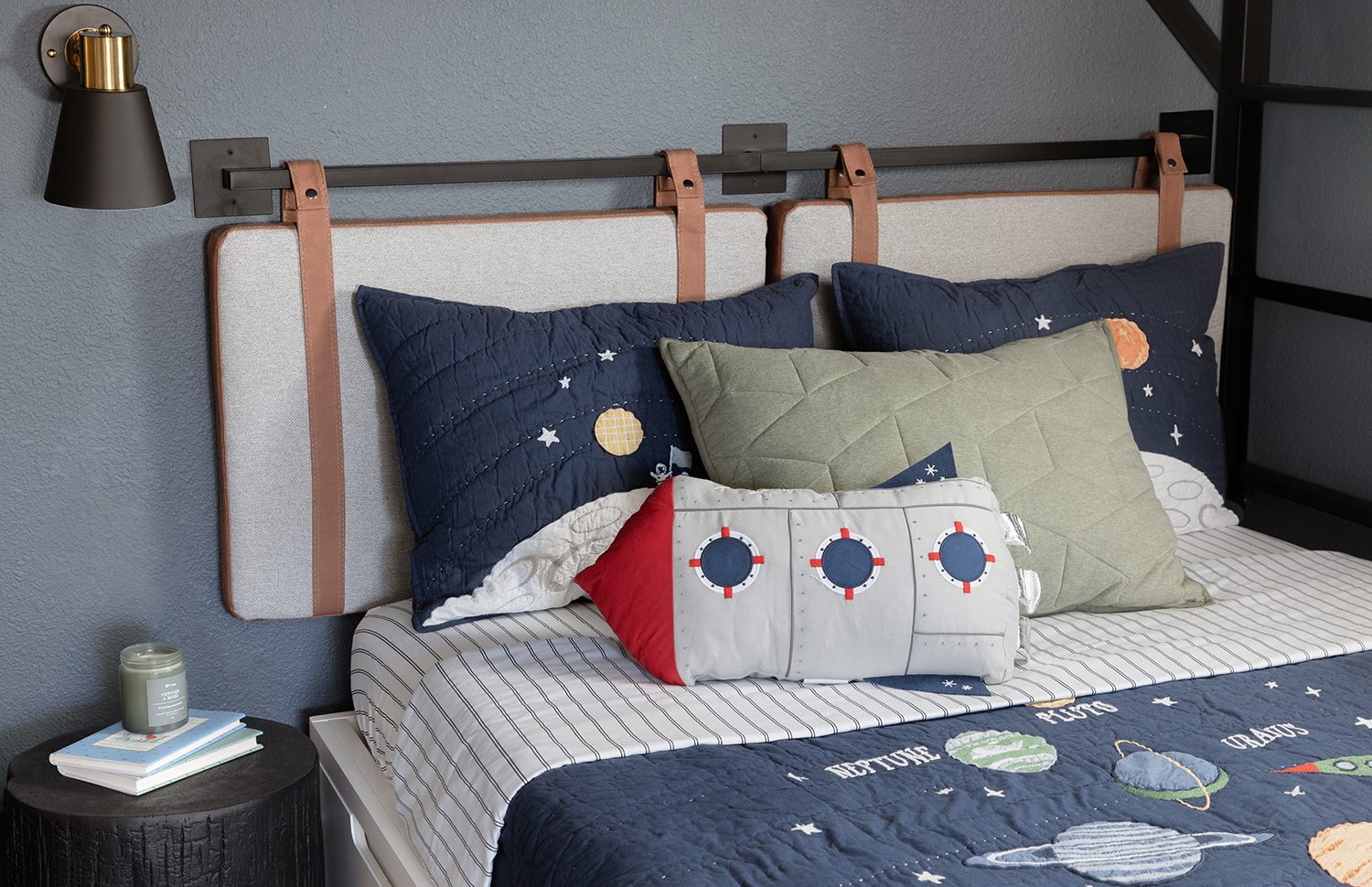When Ashley Peck tapped Havenly for her four-year-old son’s bedroom makeover, she was brimming with design ideas. “Milo is autistic, so having a room that reflected his personality while considering his disability was really important,” she explains. “He needed a room he could really enjoy that would also help with regulation and sensory-seeking.”
Lead designer Brady Burke immediately got to work designing an expressive and restorative space for Milo, using his unique interests as inspiration. “He’s an incredibly energetic, curious kid, so I wanted to carve out spaces for play and relaxation,” adds Brady. “He loves space, dinosaurs, and geography, so I made sure those interests were reflected throughout the room.”
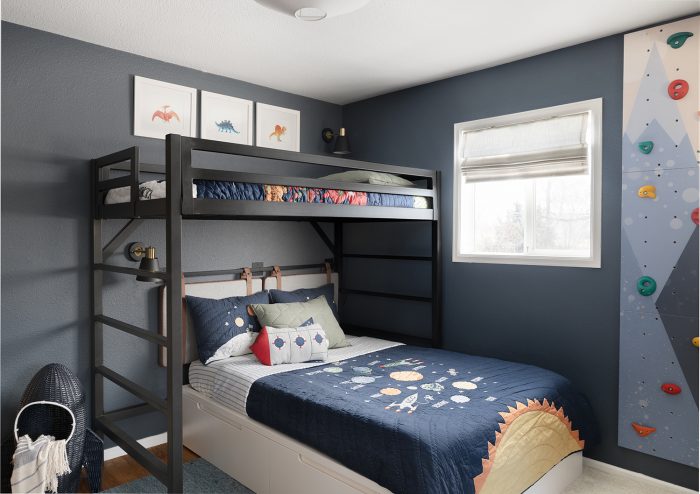
While sensory needs are different for every person, creating a space tailored to those unique needs can help a child feel safe, validated, and empowered. A sensory room can help autistic individuals regulate their emotions, and readily engage in calming activities they love,” says Molly Johnson, founder of The Autism Consultant. “Overall, these spaces foster independence and help set them up for success down the road.”
Keep scrolling for Milo’s full bedroom before & after, plus general tips for designing a balanced and restorative sensory room.
The Design Process
Before
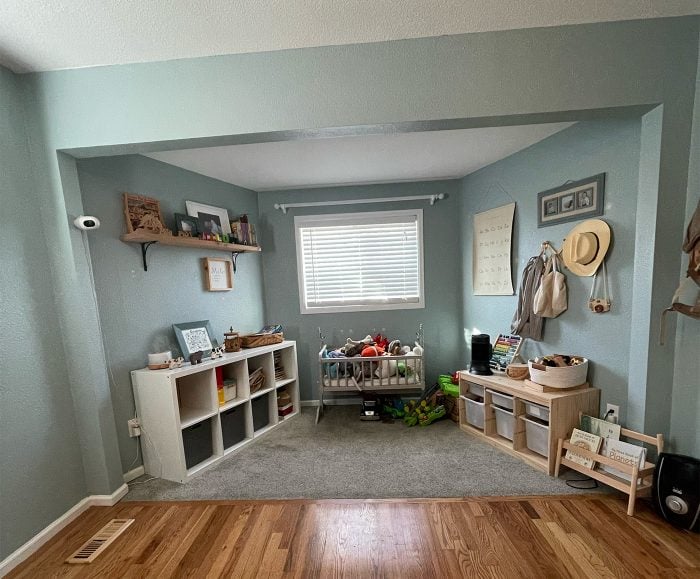
After
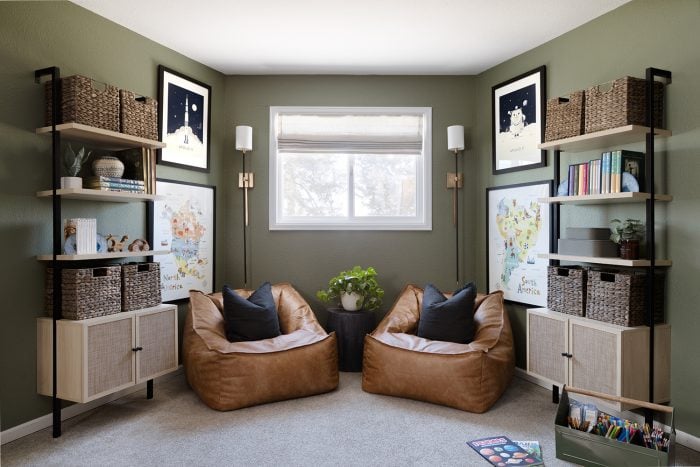
Creating a space that felt simultaneously playful and grounding was the first order of business for Brady. He met with Ashley to understand all of the design specifics, from color palette and materials to personal interests and sensory tools. “I knew the room needed to be stimulating in the right way,” adds Brady.
He ultimately went with a rock climbing wall and interactive bunk beds to check the “play” box, and cozy chairs, ambient lighting, and plenty of books for rest and regulation. “Big movement is an incredibly helpful tool for many individuals with autism,” adds Molly. “Thoughtful details like the rock climbing wall can help regulate the body, and by extension, the mind, in a safe, interactive way.”
Putting the “Fun” in Functionality

Next, Brady tackled functionality and storage to further optimize the space. “The old room didn’t take advantage of vertical space, and lacked comfortable seating,” he notes. He ultimately went with cozy leather chairs, texture-rich rugs, accessible bookcases, and an interactive lofted bunk bed with built-in storage. “Sometimes, they need to be able to co-sleep, so I swapped out the double twin beds with a lower full and lofted twin to accommodate.”
While the extra storage and organization is aesthetically-pleasing, it serves a bigger purpose in this space. “Individuals with autism often crave organization and predicability,” explains Molly. “The baskets and bookshelves in this room provide designated spaces for toys and books, which can help with regulation.”
This bedroom is now a space where Milo is truly seen. It reflects the creative and wildly curious kid that Milo is.
The Big Reveal
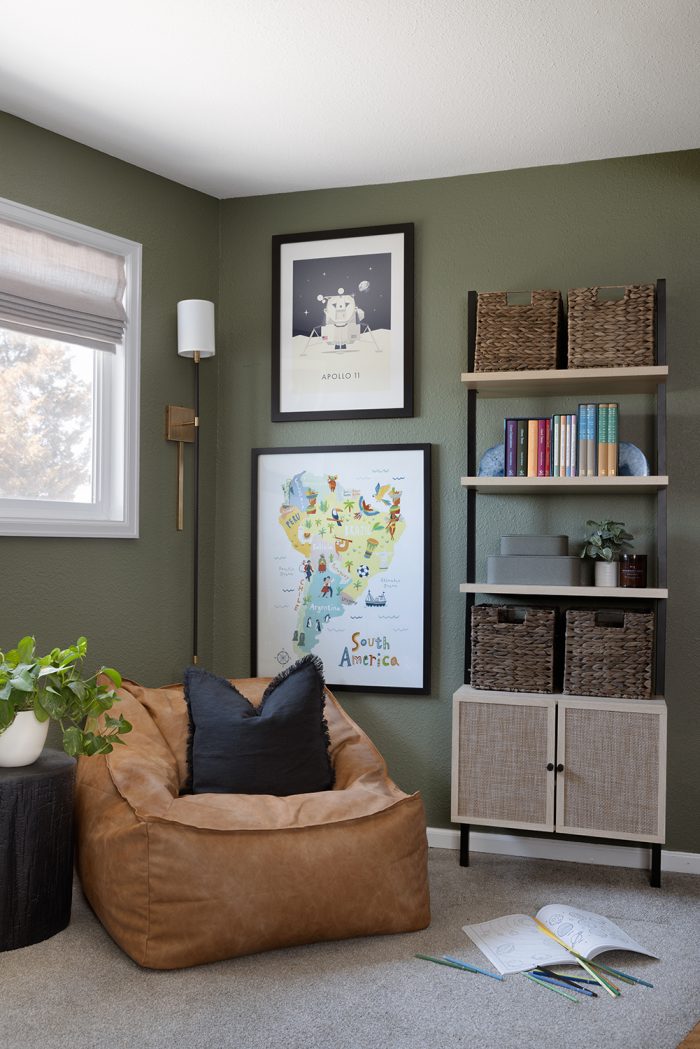
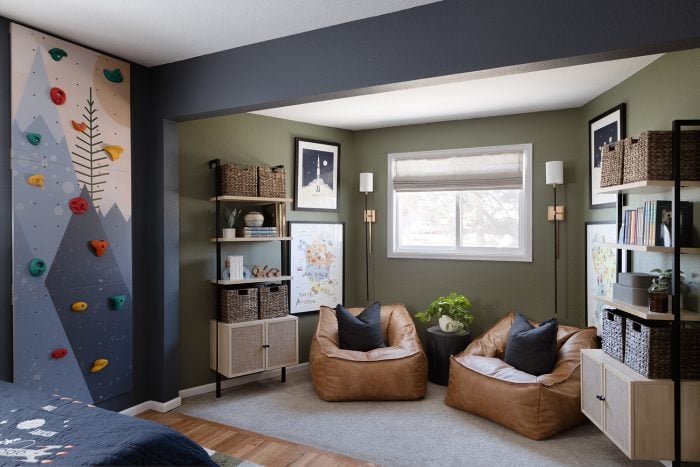
After months spent meticulously redesigning Milo’s room, Brady was finally able to show the Peck family the “after.” “I sobbed hysterically,” says Ashley of the reveal. “For someone with a disability that is often invisible to most people because of his ability and communication skills, the room is a space where Milo is truly seen. From the climbing wall, to the beautiful world map bedspread, to the night-light, the room reflects the creative and wildly curious kid that is Milo.”
Want expert advice on your own space, straight from an interior designer? Get started today with our style quiz.

